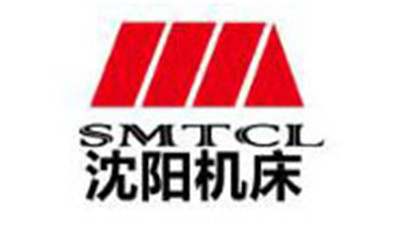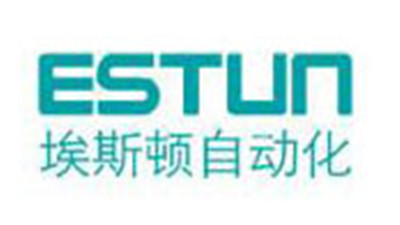Ultimate Checklist for Selecting the Best Air Core Inductor for Your Projects
Table of Contents
- Key Factors to Consider When Choosing Air Core Inductors
- Comparative Analysis of Various Air Core Inductor Types
- Performance Metrics: Evaluating Inductor Efficiency and Quality
- Size and Form Factor: Finding the Right Fit for Your Project
- Cost vs. Performance: Budgeting for Your Air Core Inductor Needs
- Application-Specific Recommendations for Air Core Inductor Selection
- Exploring High Frequency Inductor Coils: Applications, Benefits, and Selection Guide
- FAQS
- Related Posts
In the fast-changing world of electronics, picking the right components is super important if you want your project to succeed. One component that really stands out is the Air Core Inductor — it's known for being efficient and reliable across a bunch of different uses. Here at Dezhou Xinping Electronics, which has been around since 2001 and operates as a high-tech firm, we focus on making precise electronic transformers. We totally get how crucial it is to choose quality parts like air core inductors to make your designs work perfectly. This handy checklist is here to help both engineers and hobbyists find the best air core inductor for their needs. Whether you're into RF stuff, audio gear, or power electronics, choosing the right air core inductor can really make a difference in hitting those project goals and keeping everything running smoothly.

Key Factors to Consider When Choosing Air Core Inductors
When you're picking out the best air core inductor for your project, there are a few key things to keep in mind to make sure everything runs smoothly. First off, you wanna look at the inductance value—basically, how well it can store energy—because that really depends on what you’re using it for. Also, don’t forget to check the current rating; you want an inductor that can handle the max current in your circuit without saturating. If it saturates, things might get inefficient or, worse, your circuit could fail.
Size and design matter too. The core material and how the windings are made can change some pretty important stuff, like the Q factor and the self-resonant frequency. Honestly, it’s a good idea to go with a reputable supplier—someone like Dezhou Xinping Electronics. These guys have been around since 2001 and are known for making high-quality, reliable electronic transformers. Having that kind of backing makes all the difference.
**Pro tip:** Always double-check the temperature coefficient of the inductor, since temperature swings can mess with its performance. And, a quick tip—peek at the datasheet from the manufacturer. Things like loss characteristics matter, and lower losses mean your circuit's gonna work more efficiently. Hope that helps you make the right choice!
Inductor Performance Comparison
This chart compares the performance of different air core inductors based on their inductance and DC resistance values. Choosing the right inductor is crucial for optimizing project performance.
Comparative Analysis of Various Air Core Inductor Types
When you're choosing the best air core inductor for your project, it’s pretty important to get a good handle on the different types out there. Air core inductors are pretty popular because they have low losses, perform efficiently, and work well across a wide range of frequencies. Usually, you’ll come across a few main types—like toroidal, cylindrical, and rectangular—and each has its own quirks that could really influence how your project turns out. For example, toroidal inductors are awesome at magnetic coupling and produce very little electromagnetic interference thanks to their looped design. That makes them perfect if you're working with high-frequency stuff.

On the flip side, cylindrical inductors tend to be simpler to build and easily adaptable for various winding styles. They kinda strike a good balance between performance and ease of manufacturing, making them a solid choice for all sorts of general applications. Then there are rectangular inductors—less common, sure—but they’re great if space is tight, offering a compact solution without messing with the inductance value.
By comparing these different types, you’ll be better equipped to pick the right one based on your specific needs. This way, you can make sure your design hits the mark with top-notch efficiency and performance.
Performance Metrics: Evaluating Inductor Efficiency and Quality
When you're trying to pick out the best air core inductor for your project, there are some key performance factors you really don’t wanna overlook. For starters, DC resistance (or DCR) is a big deal — it directly impacts how efficiently the inductor can handle current without wasting too much energy as heat. Basically, a lower DCR is better because it keeps heat and power loss to a minimum. You’ll also want to double-check the inductance value to make sure it matches what your circuit needs; a good one should stay stable even when loads change, which is a solid sign of quality.
Another important thing to look at is the maximum current rating. That tells you the highest current the inductor can handle safely before it saturates—because once it saturates, your inductance drops like a stone. Picking something with a bit of headroom here means your setup will run smoothly without weird distortions. Plus, don’t forget about the frequency response — especially if you’re working with high-frequency circuits. All these factors matter when you’re trying to find an air core inductor that’s not just good on paper, but also reliable and long-lasting in the real world.
Size and Form Factor: Finding the Right Fit for Your Project
When you're picking out the best air core inductor for your project, one thing you definitely want to pay attention to is its size and shape. These days, there's a real push towards smaller, more compact components — and honestly, it's a smart move.
Smaller inductors not only save space but also help improve performance and cut down on power use. I read somewhere that about 75% of engineers actually prioritize size when choosing inductors because compact designs make it easier to pack more features into tight spots without losing efficiency.
Whether you're working with tiny drones that rely on microsensors or building high-performance desktop setups, getting the right form factor can really make a difference — both in how well the thing works and how it manages heat. When you look at different inductors, you'll notice that smaller ones can provide similar inductance values compared to bigger models, and they also make it a lot easier to lay out multi-layer PCBs. This is a huge deal these days since devices are getting more complex, and having that extra room really helps boost signal quality and overall system performance.
So, in the end, taking a close look at the dimensions and design of air core inductors is super important if you're aiming to get the most out of your designs.
Cost vs. Performance: Budgeting for Your Air Core Inductor Needs
When you're trying to pick out the best air core inductor for your project, one of the biggest things to think about is balancing cost with performance. Honestly, setting a budget that covers not just the upfront cost but also considers how reliable and efficient the inductor will be in the long run is super important. Sometimes, splurging a little more at the start can actually save you hassle and money later on—like cutting down on energy use or avoiding failures. It’s a good idea to check out the specs and features of a few options; that way, you can find which models give you the best bang for your buck.
Plus, knowing exactly what your project needs can really help clear things up. Think about what you’ll be using the inductor for — that’s gonna influence which type is right for you. By comparing the pros and cons of different models against their prices, you can make smarter choices—avoiding overspending but still getting the performance you need. Taking that extra care in planning your budget like this really pays off, helping you strike that sweet spot between efficiency and saving some cash. In the end, it just makes the whole process smoother and sets you up for a successful project.
Application-Specific Recommendations for Air Core Inductor Selection
When you're picking out air core inductors for a specific project, it's really important to get a good sense of what your application actually needs. Different tasks often call for inductors with varying inductance values, current capacities, or sizes—so knowing what's critical for your setup is key. For instance, if you're working on high-frequency stuff like RF circuits, you’ll want something small that doesn’t add much parasitic capacitance. Using a low-loss inductor here can really boost performance and cut down on signal distortion, making everything run smoother.

On the flip side, if you’re dealing with power things—think power supplies or motor controllers—you need inductors that can handle bigger currents and transfer energy efficiently. That’s where choosing an air core inductor with a higher saturation current is a smart move. It helps avoid core saturation and keeps things working efficiently.
Also, don’t forget about winding styles—alternatives like flat wire or Litz wire can make a big difference in reducing skin effect and improving performance at high frequencies. Basically, understanding what your application needs will help you pick the perfect air core inductor, so everything runs reliably and at its best.
Exploring High Frequency Inductor Coils: Applications, Benefits, and Selection Guide
High frequency inductor coils play a pivotal role in various applications, thanks to their unique design and functionality. Typically consisting of spiral coils wound around an insulating tube, these inductors ensure efficient performance by featuring insulated wires that prevent electrical interference. Depending on the application's requirements, the insulating tube may be hollow or integrated with an iron core or magnetic powder core, enhancing the inductor's capabilities. Commonly used inductance components such as fixed inductors, choke coils, wire frame oscillating coils, and deflection coils are essential in modern electronic systems.
The versatility of high frequency inductor coils has made them indispensable across multiple industries. From power communications and new energy vehicles to electric vehicle controllers, drives, medical equipment, and LED lighting, these inductors facilitate optimal energy management and signal processing. With their ability to handle high frequencies, they contribute to improved performance and efficiency in contemporary electronic designs.
For businesses looking to leverage the benefits of high frequency inductor coils, custom designs and OEM services are available. Manufacturers can tailor coils to meet specific customer requirements, ensuring that each product is optimized for its intended application. This adaptability not only enhances functionality but also aligns with the evolving needs of diverse industries, making high frequency inductor coils a valuable component in today’s technology landscape.
FAQS
: DC resistance (DCR) is crucial because it affects the inductor's ability to handle current without excessive energy loss. A lower DCR indicates a more efficient inductor, minimizing heat generation and power dissipation.
The inductance value must meet circuit requirements and remain stable under varying load conditions, which reflects the overall quality of the inductor.
The maximum current rating specifies the highest current an inductor can handle before saturation occurs, which would greatly reduce its inductance. Choosing an inductor with an appropriate current rating ensures reliable operation.
Frequency response impacts how well the inductor performs in high-frequency applications, making it essential for ensuring efficiency in specific project requirements.
Size and form factor are critical as smaller inductors can enhance performance, reduce power consumption, and allow for better integration of features in compact designs.
A recent report indicates that 75% of engineers prioritize size when selecting inductors because smaller components facilitate integration in tighter spaces without sacrificing power efficiency.
Smaller inductors can provide comparable inductance values to larger ones while allowing easier PC layout, leading to better functionality and improved heat management in complex devices.
Thoroughly evaluating inductor dimensions is crucial for optimizing designs, particularly in increasingly complex devices, for better signal integrity and overall system performance.
The right form factor is important in applications like unmanned drones and compact high-performance desktop systems, where functionality and heat management are critical.
Selecting air core inductors with a suitable size and form factor can lead to better signal integrity and overall system performance, particularly in multi-layer PCBs.
Blog Tags:



















